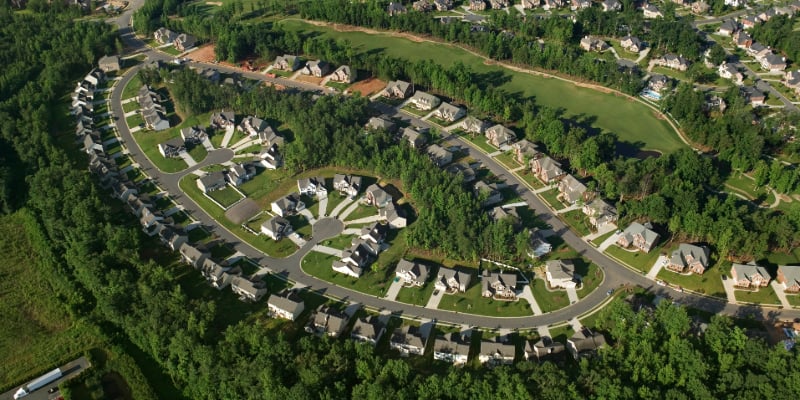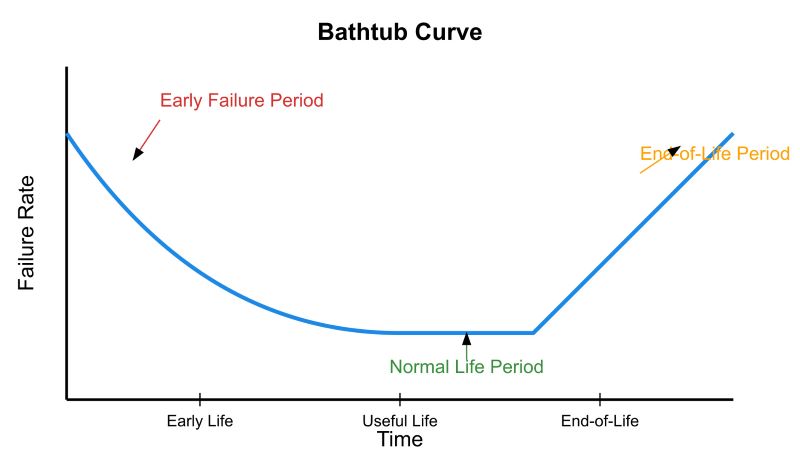Battling the Bathtub Curve: How Self-Healing Technology Curbs Underground Outages
Back to Top
Underground systems and rollercoasters share a similar trait: both are subject to ups and downs, particularly at the beginning and end.
This pattern, known as the bathtub curve, creates reliability challenges despite improved storm resilience. Underground system failures take time to investigate and repair, resulting in lengthy outages.
The curve has long been a problem for underground systems, but with about 90% of new residential subdivisions requiring underground electrical distribution, a modern solution is needed.
Enter self-healing technology. It can help defend against these predictable patterns, ensuring failures don’t compromise your system performance.
Why the Bathtub Curve Matters
The bathtub curve is an engineering concept that illustrates potential failure rates for underground systems over time. It shows higher failure rates early and late in a system’s lifespan, with a more stable period in between.

Although no system is the same, this curve helps you anticipate and address potential reliability issues on underground residential distribution (URD) systems. When faults occur underground, they can cause outages some estimates say can take at least two times longer to repair than those from overhead lines, undermining your investment and leaving customers without power longer.
Outage Causes Along the Bathtub Curve
Underground systems encounter varied failure risks throughout their lifecycle. Here are some challenges systems face along the curve:
| New URD Systems | Legacy URD Systems | All URD Systems | |
|---|---|---|---|
| Causes |
|
|
|
| Impact | Can lead to immediate failures, common in the first 3-4 years of installation | Can lead to failures later in life | Can lead to outages during severe weather or at any time |
Break Into the Curve with Self-Healing Technology
When a failure occurs, complex manual procedures for fault location, isolation, and repair contribute to prolonged outages. However, self-healing technology like S&C’s EdgeRestore® Underground Distribution Restoration System is transforming how utilities can minimize outages at the grid edge.
The EdgeRestore system equips new and existing underground residential transformers with automatic restoration capabilities to reduce outages and accelerate restoration. Now URD systems can benefit from an approach once reserved for three-phase or main feeders.
See how the EdgeRestore system locates and isolates permanent faults and reroutes power from an alternative source within 60 seconds on residential loop circuits.
The Result: Protected Investment, Enhanced Operations
The EdgeRestore system delivers benefits throughout your system’s lifecycle to minimize customer downtime and enhance operations for utility crews without significant cost.
- Increased reliability and resilience: Keep more customers online and avoid hundreds of outage minutes caused by a single fault event.
- Enhanced crew safety: Reduce crew exposure to medium voltage and risk of closing into a fault with an elbow.
- Scalable and retrofittable: Integrate easily into pad-mounted transformers to automate new lines or extend the life of legacy lines without the need for extra concrete, steel, or cables.
The Payoff: A Lasting, Responsive Grid
As storms intensify and the demand for reliable power grows, investing in underground residential systems has become increasingly crucial. However, the paradox of longer outages due to underground faults can pose a challenge to your system’s performance.
By automating underground residential distribution circuits with the EdgeRestore system, you can effectively defend against outages regardless of where your system is along the curve. This innovative solution offers a scalable, retrofittable option that minimizes downtime and enhances crew operations to keep your grid resilient and responsive across its lifespan.
Want to Strengthen Your URD System?
Contact us to see how the EdgeRestore system can autonomously keep the power on when issues occur underground.